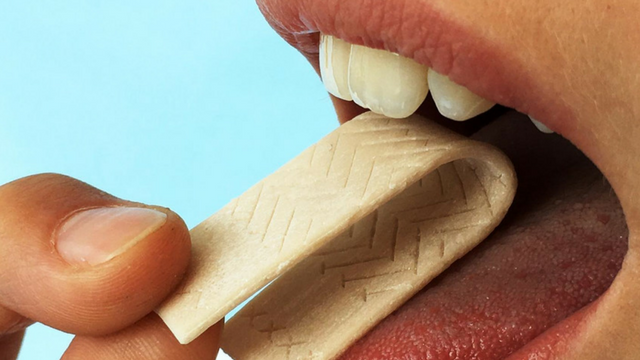 JULIUS-MAXIMILIANS-UNIVERSITÄT In a study published today (August 15) in Nature Communications, researchers demonstrate that a chewing gum equipped with a biosensor can be used to detect signs of oral disease.
JULIUS-MAXIMILIANS-UNIVERSITÄT In a study published today (August 15) in Nature Communications, researchers demonstrate that a chewing gum equipped with a biosensor can be used to detect signs of oral disease.
Their sensor is triggered by certain disease-associated enzymes in the chewer’s saliva. These enzymes—matrix metalloproteinases—break the sensor apart by targeting the protease-cleavable fragment of the sensor. This frees a bitter taste-inducing substance.
The researchers tested their sensor on patients’ saliva, both from 19 patients with peri-implant disease and 14 healthy patients with non-diseased implants. Peri-implant disease is a disorder of modern dentistry, generally described as inflammation in the area surrounding a dental implant.
After dousing the sensor in the patients’ saliva, the authors demonstrated that healthy saliva induced significantly less cleavage of the biosensor than the spit from participants with inflammation.
“These platforms are not intended to rival sophisticated antibody-based screening tests let alone advanced next-generation sequencing technologies in...
To increase the potency of this bitter substance, the researchers created what they called a second-generation sensor. In this iteration, they engineered the cleaved fragment so that it could be cleaved once more by salivary aminopeptidases, enhancing bitterness.
The biosensing gum is yet to be tested in people.
Interested in reading more?




